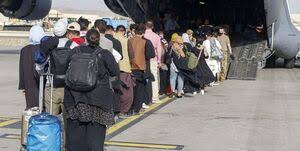Massive immigration and the uncertain future of Afghanistan
The massive migration and uncertain future of Afghanistan has been one of the most important topics discussed in recent years. This phenomenon has not only affected the lives of millions of Afghans, but has also brought extensive economic, social and political consequences for Afghanistan and the host countries.
The main factors of massive migration of Afghans
- Political and security crisis:
The return of the Taliban to power in 2021, especially after the withdrawal of international forces, created many concerns among the people.
• The lack of political stability and the spread of violence have become the main reason for people to flee the country. - Poverty and economic crisis:
• Stopping foreign aid and economic restrictions have increased unemployment, poverty and reduced job opportunities.
• Many families have to leave the country to meet their basic needs. - Violation of human rights:
• The severe restrictions that have been applied especially against women and girls (such as the ban on education and work) have forced a large part of the society to migrate.
• Human rights activists, journalists and religious minorities are also under threat. - Climate changes and natural crises:
• Drought, floods and other natural crises in Afghanistan have caused the loss of farmers’ livelihoods and increased internal and external migration.
Consequences of mass migration
- For Afghanistan:
• Brain drain: The massive migration of professionals, students and educated people has weakened the scientific, economic and social infrastructure of the country.
• Decline of skilled labor force: The massive exodus of skilled labor force has hit the domestic economy hard.
• Intensification of the demographic crisis: The remaining population in the country mainly includes disadvantaged and vulnerable groups, which are becoming more difficult for the government to manage.
2. For host countries:
• Challenges of integration: Host countries face problems in settling, providing jobs and providing services to immigrants.
• Social tensions: the arrival of a large number of immigrants to some countries can increase social and political tensions.
• Advantages: On the other hand, the presence of immigrants can help provide labor in the host countries.
3. For the global community:
• Increasing pressure on humanitarian organizations: providing assistance to millions of displaced Afghans requires extensive financial and human resources.
• Intensification of regional crises: Afghanistan’s instability can affect the security and stability of neighboring countries.
The uncertain future of Afghanistan
- Continuing immigration:
Due to the lack of positive changes in the economic and political situation of Afghanistan, the migration process will probably continue in the coming years. - The possibility of a humanitarian crisis:
If international aid and humanitarian efforts are reduced, Afghanistan may face one of the largest humanitarian crises in history. - Opportunities for reconstruction:
• Regional and international cooperation can provide an opportunity to rebuild the country.
• Investing in infrastructure and creating job opportunities can reduce migration and improve people’s living conditions. - The role of the international community:
The international community can help the future of Afghanistan by pressuring the Taliban government to respect human rights, provide humanitarian aid and support development programs.

